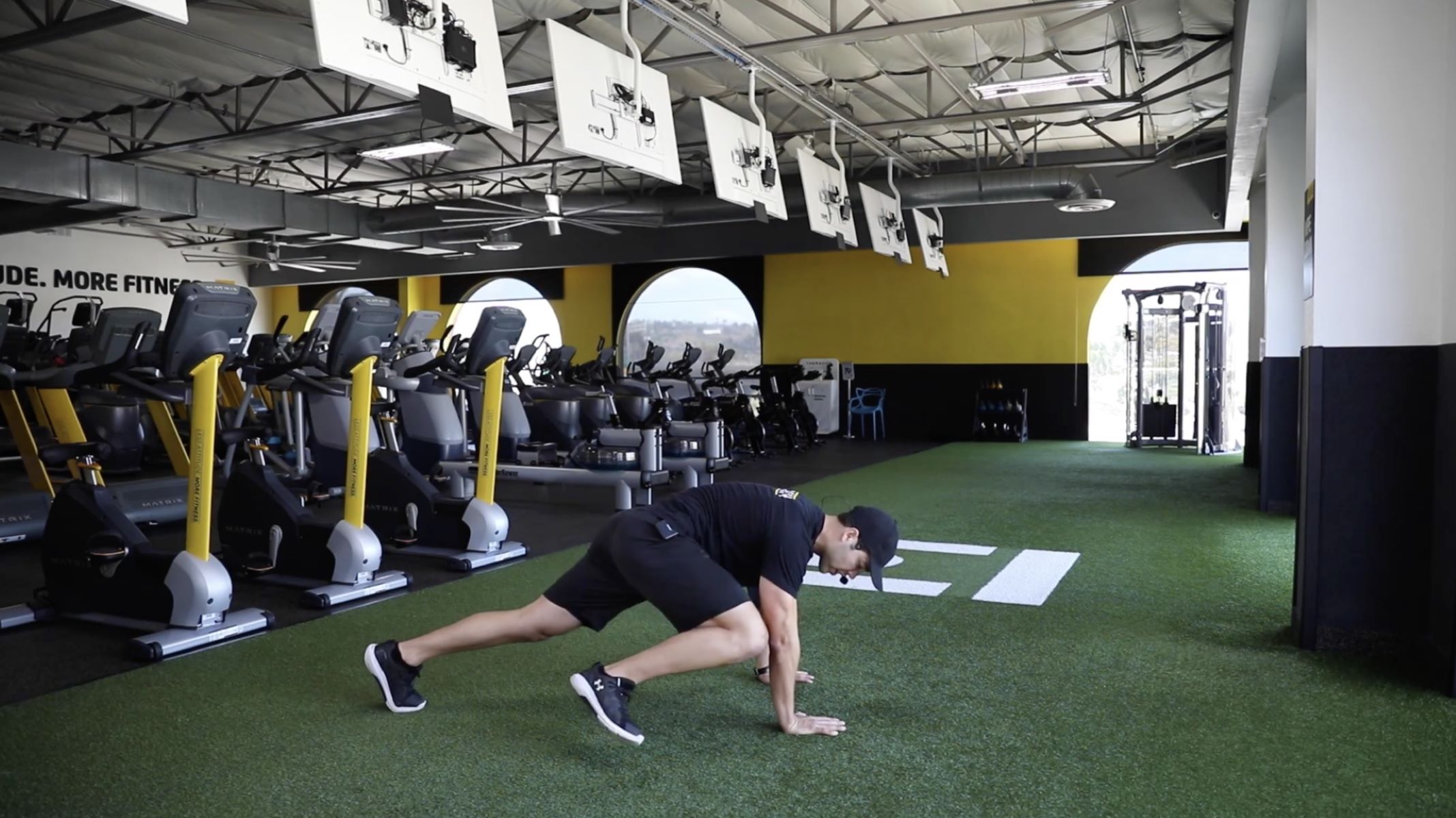

Featured
How Does Muscular Endurance Work
Modified: March 1, 2024
Find out how muscular endurance works and the benefits of developing it. Get featured articles and expert tips on improving your muscular endurance.
Introduction
Muscular endurance is a crucial component of physical fitness that often goes overlooked. While many people focus on building muscular strength and achieving greater muscle mass, cultivating muscular endurance is equally important for overall health and performance.
So, what exactly is muscular endurance? In simple terms, it refers to the ability of a muscle or group of muscles to perform repetitive contractions over an extended period of time. This endurance is essential for activities that involve continuous movement, such as running, cycling, swimming, and even everyday tasks like carrying groceries or climbing stairs.
Unlike muscular strength, which is the capacity of a muscle to generate maximum force, muscular endurance primarily focuses on the ability to sustain muscular contractions over an extended duration. It is often measured by the number of repetitions or the length of time that a muscle can perform an exercise before fatigue sets in.
Now, you might be wondering, what sets muscular endurance apart from muscular strength? While both concepts are related to muscle performance, they target different aspects of muscle function.
Muscular strength is about how much force a muscle can generate in a single contraction or lift, whereas muscular endurance emphasizes the ability of the muscle to keep contracting repeatedly without fatigue. In other words, muscular endurance focuses on sustaining a lower level of force over an extended period.
The benefits of developing muscular endurance are far-reaching. Not only does it improve overall physical performance, but it also enhances functional movement patterns, reduces the risk of injury, and increases stamina and energy levels. Whether you’re an athlete aiming to improve performance, someone looking to maintain a healthy lifestyle, or even an elderly individual seeking to maintain independence, incorporating muscular endurance training into your fitness routine is crucial.
In the following sections, we will explore the factors that influence muscular endurance, effective training methods to improve it, and common mistakes to avoid along the way. By understanding the principles of muscular endurance and implementing targeted training strategies, you can take your fitness journey to the next level.
Definition of Muscular Endurance
Muscular endurance, as mentioned earlier, refers to the capacity of a muscle or group of muscles to sustain contractions over an extended period of time. It involves the ability to perform repetitive movements or hold a particular position without experiencing fatigue.
In a more technical sense, muscular endurance is determined by the muscle fibers’ ability to produce adenosine triphosphate (ATP), the primary energy source that fuels muscle contractions. The more efficient the muscle fibers are at generating ATP, the longer they can sustain contractions without becoming exhausted.
It’s important to note that muscular endurance is specific to the muscle groups being utilized. For example, while someone may have excellent endurance in their leg muscles, they may have a lower level of endurance in their upper body muscles. Therefore, it is necessary to train each muscle group individually to improve overall muscular endurance.
Muscular endurance can be further categorized into two types: local muscular endurance and general muscular endurance.
Local muscular endurance: This refers to the ability of a specific muscle or group of muscles to sustain contractions over an extended period. For example, the local muscular endurance of the bicep muscles determines how many repetitions of bicep curls a person can perform before experiencing fatigue.
General muscular endurance: This term refers to the overall endurance capacity of the entire body. It takes into consideration the coordination between different muscle groups and their ability to work together to perform an activity over an extended duration. General muscular endurance is crucial for activities like long-distance running, where multiple muscles are involved.
A common way to measure muscular endurance is through exercises such as push-ups, sit-ups, or planks, where you perform as many repetitions or hold a position for as long as possible. These exercises provide a practical gauge of the muscle’s endurance capabilities and can be used to track progress over time.
Improving muscular endurance requires consistent training and progressive overload. By gradually increasing the intensity, duration, or repetitions of an exercise, you challenge the muscle fibers and encourage adaptations that enhance their endurance capacity.
Now that we have a clear understanding of what muscular endurance entails, let’s delve into the factors that affect it and how to train effectively to improve it.
How Muscular Endurance Differs from Muscular Strength
Muscular endurance and muscular strength are two distinct components of physical fitness, each with its own characteristics and training approaches. While they are related, understanding the differences between the two is essential to design an effective training program that targets your specific goals.
As mentioned earlier, muscular endurance focuses on the ability of a muscle or group of muscles to sustain contractions over an extended period. It involves performing repetitive movements or maintaining a position for an extended duration without experiencing fatigue. Muscular endurance is more about sustaining a lower level of force for a longer time.
On the other hand, muscular strength is the ability of a muscle or muscle group to generate maximum force in a single contraction or lift. It emphasizes short bursts of intense effort, such as lifting a heavy weight or performing a one-rep max lift. Muscular strength is about the highest amount of force a muscle can produce.
To put it simply, muscular endurance enables individuals to perform activities that require repetitive contractions over an extended duration, while muscular strength aims at maximizing force output for short bursts of effort.
These differences also manifest in the training methods used to develop each component. Muscular endurance training typically involves performing moderate to high repetitions with lighter weights or bodyweight exercises. The goal is to challenge the muscles and improve their endurance capacity.
In contrast, muscular strength training usually involves low repetitions with heavier weights. This type of training focuses on increasing the force-producing capabilities of the muscles by progressively overloading them.
Both muscular endurance and muscular strength are valuable in their own right, and their importance depends on your specific fitness goals. For athletes participating in endurance sports or activities that require sustained effort, such as long-distance running or swimming, muscular endurance plays a vital role in enhancing performance. On the other hand, individuals focused on muscle growth or powerlifting competitions may prioritize building muscular strength.
It’s important to note that muscular endurance and strength are not mutually exclusive. They can complement each other and contribute to overall performance and fitness. Incorporating a well-balanced training program that includes both endurance and strength exercises can provide optimal results, allowing you to perform well in various activities and have a functional, resilient body.
Now that we understand the differences between muscular endurance and muscular strength, let’s explore the benefits of training specifically for muscular endurance.
Benefits of Muscular Endurance Training
Muscular endurance training offers a multitude of benefits that go beyond simply improving the ability to sustain muscular contractions. Incorporating this type of training into your fitness routine can lead to impressive improvements in overall physical performance and enhance your quality of life.
1. Improved athletic performance: Muscular endurance is crucial for athletes participating in activities that require sustained effort, such as long-distance running, swimming, or cycling. By improving muscular endurance, athletes can perform at a higher intensity for longer durations, enhancing their overall performance and competitiveness.
2. Increased stamina and energy levels: Muscular endurance training helps to enhance the body’s energy systems and optimize oxygen utilization. This results in increased stamina and improved energy levels, making everyday activities feel less exhausting and allowing you to tackle physical tasks with more ease and efficiency.
3. Enhanced functional movement patterns: Muscular endurance training targets the muscles involved in everyday movements, such as lifting, carrying, and walking. By improving the endurance of these muscles, you enhance your ability to perform these activities without experiencing fatigue or strain, leading to improved overall functional movement patterns.
4. Reduced risk of injury: Muscular endurance training not only strengthens the muscles but also reinforces the connective tissues, ligaments, and tendons. This added strength and resilience can help protect against injuries during physical activities and improve joint stability, minimizing the risk of sprains, strains, and other common injuries.
5. Increased muscle tone and definition: Muscular endurance training can lead to improved muscle tone and definition, giving your physique a more sculpted and athletic appearance. As you perform exercises over an extended period of time, you stimulate the muscles to adapt and grow stronger, resulting in improved muscle definition and a leaner physique.
6. Boosted metabolism: Muscular endurance training can play a role in boosting your metabolism. As you build lean muscle mass through endurance exercises, your resting metabolic rate increases, allowing you to burn more calories at rest. This can be beneficial for weight management and overall body composition.
7. Mental resilience: Building muscular endurance requires mental focus, discipline, and determination. Endurance training challenges your mental fortitude, allowing you to push through fatigue and discomfort. This can translate into other areas of life, enhancing mental resilience, discipline, and determination in various aspects of your daily routine.
These are just a few of the many benefits that muscular endurance training can provide. Whether you’re an athlete looking to enhance performance, an individual seeking to improve everyday functional abilities, or someone wanting to promote overall health and well-being, incorporating muscular endurance training into your fitness routine can have profound positive effects.
Now that we understand the benefits of muscular endurance training, let’s explore the various factors that can influence an individual’s muscular endurance.
Factors Affecting Muscular Endurance
Several factors influence an individual’s muscular endurance and their ability to sustain contractions over an extended period of time. Understanding these factors can help identify potential areas for improvement and optimize training strategies.
1. Muscle Fiber Type: There are two main types of muscle fibers: slow-twitch (Type I) and fast-twitch (Type II). Slow-twitch fibers have a higher endurance capacity and are more resistant to fatigue. Fast-twitch fibers, on the other hand, are better suited for short bursts of intense effort but fatigue more quickly. Genetics play a significant role in determining the composition of muscle fibers an individual has, but through training, it is possible to influence the proportion of each type.
2. Oxygen Delivery and Utilization: Muscular endurance heavily relies on the efficient delivery and utilization of oxygen. The respiratory and cardiovascular systems play a critical role in providing oxygen-rich blood to the muscles during sustained activity. Factors that influence oxygen delivery include lung capacity, heart health, and red blood cell count. Regular aerobic exercise and cardiovascular training can improve oxygen delivery and utilization, enhancing muscular endurance.
3. Muscle Strength: Muscular endurance is closely related to muscular strength. Strengthening the muscles through resistance training can increase their endurance capacity. Greater muscular strength allows muscles to sustain contractions for longer durations without experiencing fatigue. Therefore, individuals with greater muscular strength are often more likely to have better muscular endurance.
4. Training Volume and Intensity: The volume and intensity of training directly impact muscular endurance. Training with higher volume (more repetitions or longer durations) at moderate intensity can improve endurance. Conversely, training with lighter loads and high repetitions can enhance muscular endurance without placing excessive strain on the muscles. Gradually increasing the volume and intensity of exercises over time can promote progressive overload and stimulate further endurance adaptations.
5. Nutrition and Hydration: Proper nutrition and hydration are crucial for supporting muscular endurance. Adequate protein intake is essential for muscle repair and growth, while carbohydrates provide the necessary fuel for sustained activity. Additionally, staying properly hydrated ensures optimal muscle function and performance. Nutrient deficiencies and dehydration can lead to muscle fatigue and hinder endurance performance.
6. Muscular Imbalances: Muscular imbalances, where certain muscle groups are disproportionately stronger or weaker, can affect muscular endurance. Weak or underdeveloped muscles may fatigue more quickly during sustained activity, leading to decreased endurance. Targeted strength training exercises to address these imbalances can improve overall muscular endurance.
7. Rest and Recovery: Sufficient rest and recovery are essential for enhancing muscular endurance. During rest periods, the muscles repair and adapt, leading to increased endurance capacity. Overtraining or not allowing adequate recovery time can impede progress and increase the risk of injury. Balancing training sessions with rest days is crucial for optimal results.
By understanding and addressing these factors, individuals can optimize their training approach and improve their muscular endurance. In the next section, we’ll explore effective training methods to enhance muscular endurance.
Training Methods to Improve Muscular Endurance
To improve muscular endurance, it is essential to implement specific training methods that target the endurance capacity of the muscles. By consistently challenging and gradually overloading the muscles, you can enhance their ability to sustain contractions over an extended period of time. Here are several effective training methods to improve muscular endurance:
1. High Repetitions: Perform exercises for a high number of repetitions (12-20+) per set. This helps build endurance by fatiguing the muscles over an extended period. Use lighter weights or bodyweight exercises to ensure proper form and minimize the risk of injury.
2. Circuit Training: Create a circuit that combines multiple exercises targeting different muscle groups. Perform each exercise for a specific duration or number of repetitions before moving on to the next one. This method increases the cardiovascular demand while also challenging muscular endurance.
3. Supersets and Tri-sets: Combine exercises targeting the same muscle group or different muscle groups without rest in between. For example, perform push-ups immediately followed by dumbbell rows, or combine squats with lunges. This method increases the overall workload on the muscles, promoting endurance adaptations.
4. Tempo Training: Control the tempo of each repetition, emphasizing the eccentric (lowering) phase of the movement. Slowing down the movement engages the muscles for a longer duration, increasing the time under tension and enhancing endurance.
5. Interval Training: Incorporate interval training into your routine, alternating between periods of high-intensity exercise and active recovery. For example, perform high-intensity exercises (e.g., burpees, jump squats) for a specific duration, followed by a lower intensity exercise (e.g., walking or slow jog) for a brief period. This method challenges the cardiovascular system while improving muscular endurance.
6. Slow and Controlled Movements: Focus on executing exercises with slow and controlled movements, emphasizing proper form and muscle engagement. This deliberate approach increases the time under tension and maximizes the endurance stimulus on the muscles.
7. Progressive Overload: Gradually increase the difficulty of your workouts over time to continually challenge the muscles and promote adaptations. This can be achieved by increasing the resistance, number of repetitions, duration of exercises, or reducing rest periods between sets.
8. Active Recovery: Incorporate active recovery days into your training routine. Engage in low-intensity activities like walking, swimming, or yoga to promote blood circulation, facilitate muscle recovery, and enhance overall endurance capacity.
Remember, consistency is key when it comes to improving muscular endurance. Aim to incorporate these training methods into your routine at least 2-3 times per week, allowing for proper rest and recovery between sessions. As you progress, continue challenging yourself by increasing the workload gradually to sustain ongoing improvements in muscular endurance.
Now that we’ve explored effective training methods, it’s important to be aware of common mistakes to avoid during muscular endurance training, which we’ll discuss in the next section.
Common Mistakes to Avoid when Training for Muscular Endurance
Training for muscular endurance requires careful attention to technique, intensity, and recovery. Avoiding common mistakes can help maximize the effectiveness of your workouts and reduce the risk of injury. Here are some common mistakes to avoid when training for muscular endurance:
1. Sacrificing Proper Form: Maintaining proper form is crucial for targeting the intended muscles and preventing injury. Avoid sacrificing form for the sake of completing more repetitions. Focus on quality over quantity and prioritize maintaining proper alignment and control throughout each exercise.
2. Ignoring Warm-up and Cool-down: Skipping warm-up exercises can increase the risk of injury and decrease performance. Similarly, neglecting cool-down stretches can lead to muscle tightness and delayed recovery. Prioritize warming up with dynamic stretches and gradually decreasing intensity during your cool-down to prepare your muscles for the workout and aid in recovery.
3. Neglecting Progressive Overload: Muscular endurance improvements require progressive overload, gradually increasing the workload over time. Failing to progressively challenge your muscles can lead to plateauing and limited progress. Ensure that you continually push yourself by increasing intensity, repetitions, or duration to promote ongoing adaptations.
4. Overtraining: Pushing yourself too hard or not allowing sufficient rest and recovery can lead to overtraining. Overtraining can negatively impact performance, increase the risk of injury, and hinder progress. Incorporate adequate rest days into your routine and listen to your body’s signals to avoid overtraining.
5. Lack of Variation: Performing the same exercises repeatedly without variation can lead to staleness and decreased progress. Add variety to your workouts by incorporating different exercises, using different equipment, or trying new training methods. This not only keeps things interesting but also challenges your muscles in new ways, promoting continuous improvement.
6. Neglecting Muscle Imbalances: Muscle imbalances can hinder muscular endurance and increase the risk of injury. Focus on maintaining balanced strength and development across muscle groups. Identify and address any specific weaknesses or imbalances through targeted exercises to ensure overall muscular endurance and reduce the risk of overcompensation-related injuries.
7. Lack of Consistency: Muscular endurance, like any other fitness component, requires consistent training. A sporadic approach to training can hinder progress and limit improvements. Aim for regular, consistent workouts that gradually challenge your muscles over time.
8. Poor Nutrition and Hydration: Neglecting proper nutrition and hydration can significantly impact your muscular endurance. Ensure you consume a balanced diet that provides adequate carbohydrates, proteins, and hydration to support muscle performance and recovery. Fueling your body properly helps optimize endurance and prevent fatigue.
By avoiding these common mistakes and following proper training guidelines, you can optimize your muscular endurance workouts and achieve your fitness goals more effectively. Now, let’s put everything together and provide a sample muscular endurance workout routine.
Sample Muscular Endurance Workout Routine
Implementing a well-designed workout routine is key to improving muscular endurance. This sample workout routine incorporates a mix of exercises targeting different muscle groups and utilizes high repetitions to challenge and enhance endurance capacity. Remember to adjust the weights and repetitions based on your fitness level and gradually progress over time.
Warm-up:
- 5-10 minutes of light cardio exercise to increase heart rate and blood flow
- Dynamic stretches targeting major muscle groups, such as arm circles, leg swings, and shoulder rotations
Workout:
- Push-ups: 3 sets of 15-20 repetitions
- Bodyweight Squats: 3 sets of 20-25 repetitions
- Walking Lunges: 3 sets of 12-15 repetitions per leg
- Plank Hold: 3 sets of 45-60 seconds
- Dumbbell Shoulder Press: 3 sets of 15-20 repetitions
- Seated Leg Press: 3 sets of 20-25 repetitions
- Tricep Dips: 3 sets of 15-20 repetitions
- Step-ups: 3 sets of 12-15 repetitions per leg
Cool-down:
- 5-10 minutes of light cardio exercise to gradually lower heart rate
- Static stretches targeting major muscle groups, holding each stretch for 15-30 seconds
This sample workout routine targets major muscle groups while incorporating compound exercises to challenge multiple muscle groups simultaneously. Perform each exercise with controlled, proper form, and focus on achieving the target number of repetitions. Gradually increase the weights or repetitions as your endurance improves.
It’s important to note that this is just a sample routine and can be adjusted based on individual preferences and fitness level. Always listen to your body and modify the exercises or intensity if needed. Additionally, be sure to consult with a healthcare professional before starting any new exercise program.
By following a well-rounded workout routine that includes both strength and endurance exercises, along with proper nutrition and rest, you can improve your muscular endurance and experience the benefits it brings to your overall fitness and well-being.
Conclusion
Muscular endurance is a vital component of physical fitness that plays a crucial role in everyday activities and athletic performance. Developing and improving muscular endurance offers a wide range of benefits, including enhanced athletic performance, increased stamina, reduced risk of injury, and improved overall functional movement patterns.
Understanding the differences between muscular endurance and muscular strength is essential for designing an effective training program. While muscular endurance focuses on sustaining contractions over an extended duration, muscular strength revolves around generating maximum force in a single contraction.
To improve muscular endurance, it is important to consider various factors that influence it, including muscle fiber type, oxygen delivery and utilization, muscle strength, training volume and intensity, nutrition and hydration, muscular imbalances, and rest and recovery. By addressing these factors, individuals can optimize their training approach and achieve better results.
When training for muscular endurance, it is crucial to avoid common mistakes that can hinder progress and increase the risk of injury. These mistakes include sacrificing proper form, neglecting warm-up and cool-down, lack of progressive overload, overtraining, lack of variation, neglecting muscle imbalances, lack of consistency, and poor nutrition and hydration.
To apply these principles effectively, a sample workout routine targeting muscular endurance can be implemented. This routine incorporates a mix of exercises targeting different muscle groups with high repetitions and progressive overload.
In conclusion, by incorporating proper training methods, avoiding common mistakes, and following a well-rounded workout routine, individuals can improve their muscular endurance, enhance their overall fitness level, and enjoy the countless benefits it brings. So, whether you’re an athlete looking to enhance performance or someone seeking to improve everyday functional abilities, prioritize muscular endurance training and take your fitness journey to the next level.









